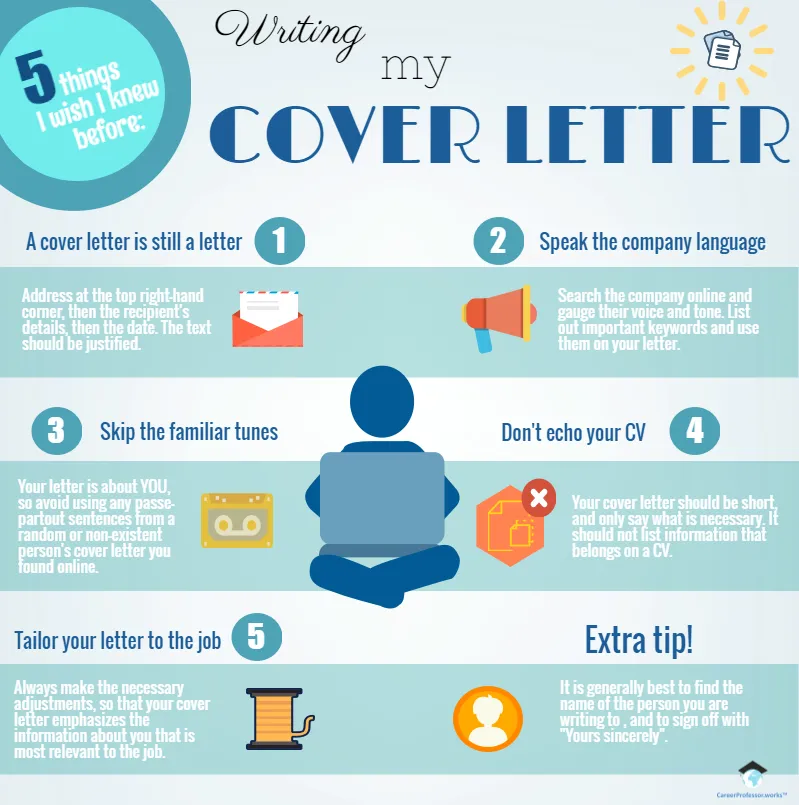Understand the Purpose of a Cover Letter
A cover letter serves as your first introduction to a potential employer, complementing your resume by providing context and highlighting your most relevant skills and experiences. It’s your chance to make a strong first impression and demonstrate why you’re a suitable candidate for the specific position. Unlike a resume, which offers a factual overview, a cover letter allows you to infuse personality, express your enthusiasm, and show a genuine interest in the company and the role. A well-crafted cover letter can significantly increase your chances of getting an interview and landing your dream job. It should not be a mere repetition of your resume; instead, it should elaborate on your qualifications and explain how you can contribute to the company’s success. The goal is to entice the hiring manager to delve deeper into your application, ultimately leading to an interview opportunity.
Highlight Key Skills and Experiences
Your cover letter should spotlight the skills and experiences that align with the job requirements. Review the job description meticulously and identify the key qualifications the employer is seeking. Then, showcase how your past experiences and skills directly match those needs. Provide specific examples of how you’ve demonstrated these skills in previous roles. Don’t just list your skills; illustrate them with achievements and quantifiable results whenever possible. For instance, instead of saying “Managed projects,” you could write “Managed and successfully delivered three projects on time and under budget, resulting in a 15% increase in efficiency.” This approach allows the hiring manager to quickly understand your value and the contributions you can make to their team. Tailor the skills you highlight to each specific job application for maximum impact.
Research the Company and Tailor Your Letter
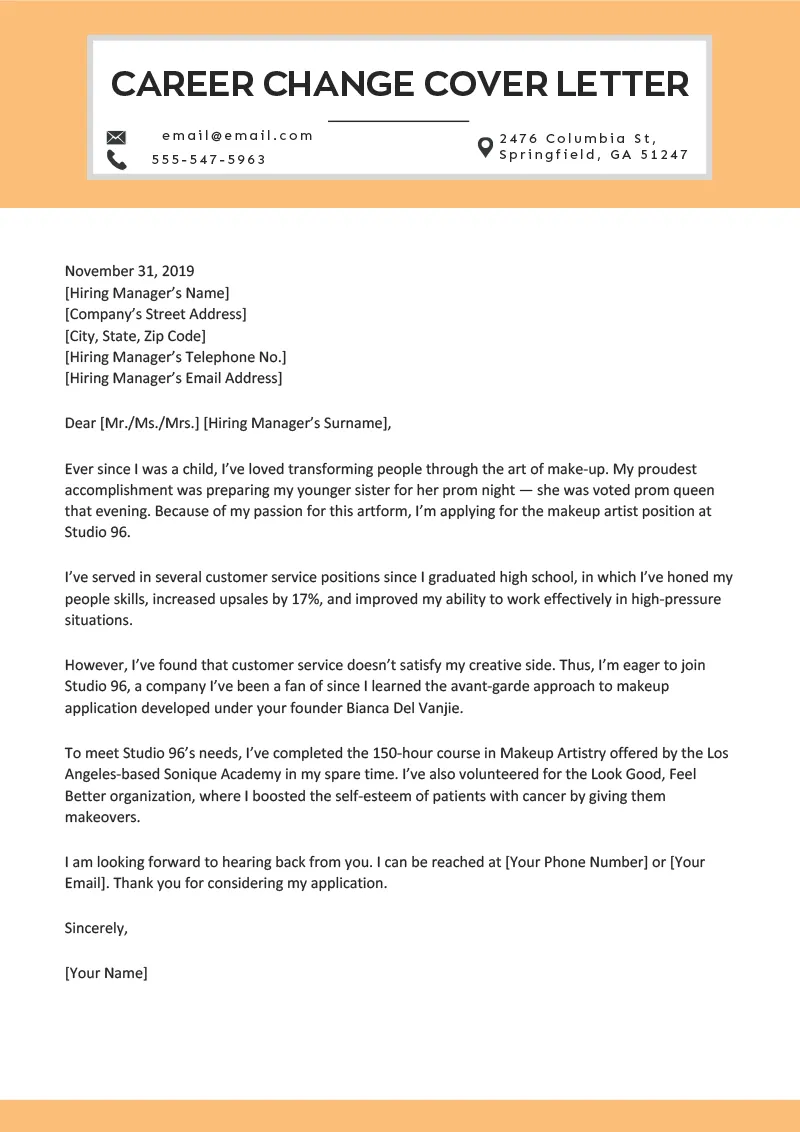
Before writing your cover letter, research the company thoroughly. Visit their website, explore their social media profiles, and read articles about them. Understanding their mission, values, and recent achievements will help you tailor your letter to reflect your genuine interest in the organization. This research is crucial for showing that you are truly interested in the role and the company, not just any job. Personalize your letter by mentioning specific aspects of the company that resonate with you, such as their innovative projects, their commitment to sustainability, or their positive company culture. This level of detail demonstrates that you’ve taken the time to learn about them, making your application stand out from generic submissions.
Focus on the Employer’s Needs
Shifting your focus from what you want to what the employer needs is critical. Your cover letter should demonstrate how your skills and experiences can benefit the company. Instead of focusing solely on your career goals, highlight how you can solve their problems, contribute to their projects, or add value to their team. Frame your accomplishments in terms of the positive outcomes they generated for your previous employers. Use the job description as a guide to understand the challenges and goals of the role, and then illustrate how you can address them. This approach positions you as a solution provider, which is highly valued by employers. Tailor your letter to address the specific needs outlined in the job description, making it clear that you understand the requirements and are prepared to meet them.
Use Action Verbs and Quantifiable Results
Use strong action verbs to describe your accomplishments. Words like “managed,” “developed,” “implemented,” and “achieved” make your experience more compelling. However, it’s not enough to simply use action verbs; you must also quantify your results whenever possible. Provide data, numbers, and specific examples to demonstrate the impact of your work. For instance, instead of saying “Improved customer satisfaction,” say “Improved customer satisfaction by 20% through the implementation of a new feedback system.” Quantifiable achievements provide concrete evidence of your skills and expertise, making your application more persuasive. Use numbers to showcase your impact and give the employer a clear understanding of your capabilities. Always back up your claims with solid evidence to reinforce your credibility.
Structure Your Cover Letter Effectively
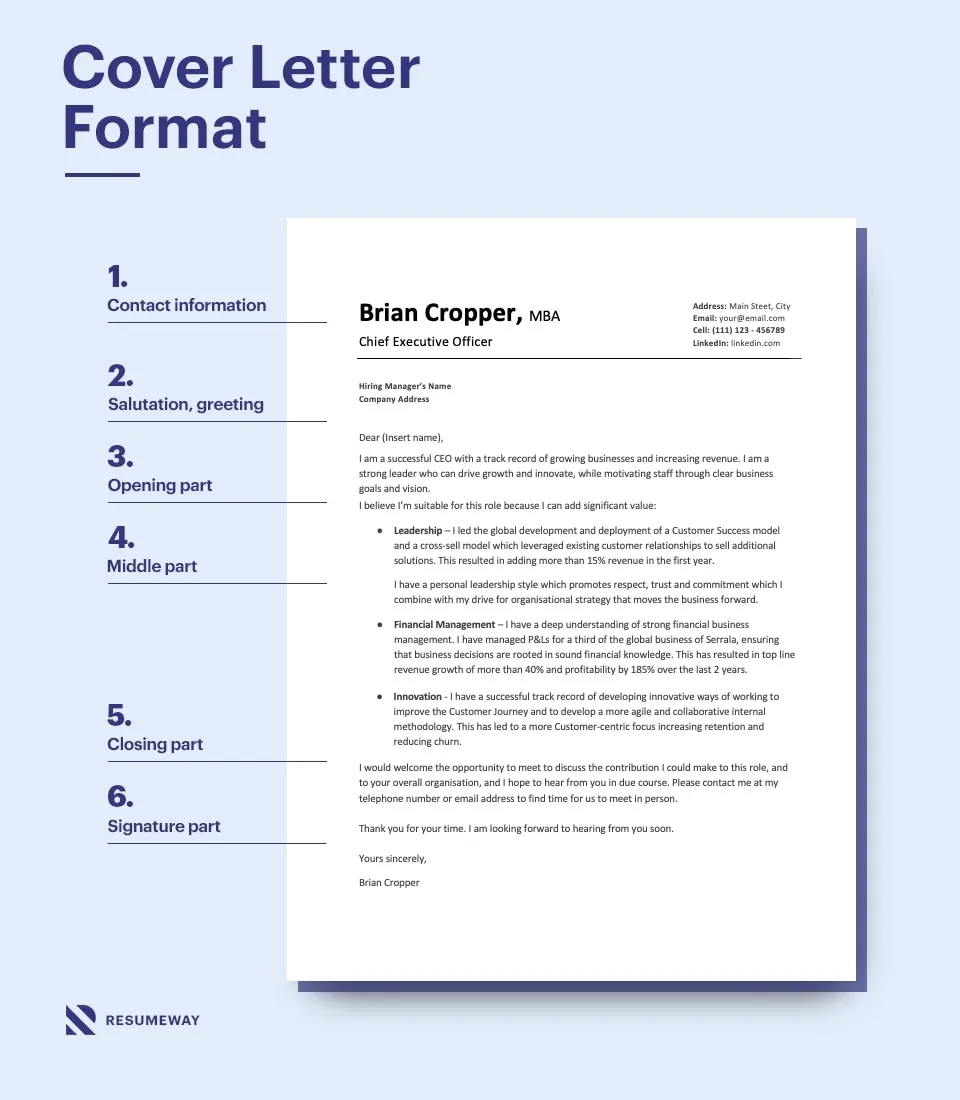
A well-structured cover letter is easy to read and makes a positive impression. Follow a standard format, including a header with your contact information, a salutation, an opening paragraph, body paragraphs, and a closing paragraph. Keep the letter concise and focused, ideally within one page. The structure helps to organize your thoughts and presents your qualifications in a clear and logical manner. Each section should serve a specific purpose, from introducing yourself to summarizing your skills and expressing your interest in the role. A clear structure makes it easier for the hiring manager to quickly grasp your key qualifications and understand your value. Use formatting to enhance readability, such as bullet points, white space, and clear section headings.
Header Contact Information
Include your full name, address, phone number, and email address in the header. Make sure your contact information is up-to-date and professional. Double-check that your email address is appropriate for professional correspondence. Consider including a link to your LinkedIn profile or online portfolio if relevant to the job. Ensure that the header is neatly formatted and easily accessible, allowing the employer to quickly contact you if they are interested in your application. Consistent and correct contact information ensures the hiring manager can easily reach you.
Salutation
Address the hiring manager by name if possible. Research the name of the hiring manager or recruiter to personalize your letter. If you can’t find a name, use a professional greeting like “Dear Hiring Manager.” Avoid generic greetings such as “To Whom It May Concern,” as they can make your letter seem impersonal. Using the hiring manager’s name creates a positive first impression and demonstrates that you’ve taken the time to tailor your application. Proper salutations immediately set a professional tone for your entire cover letter.
Opening Paragraph
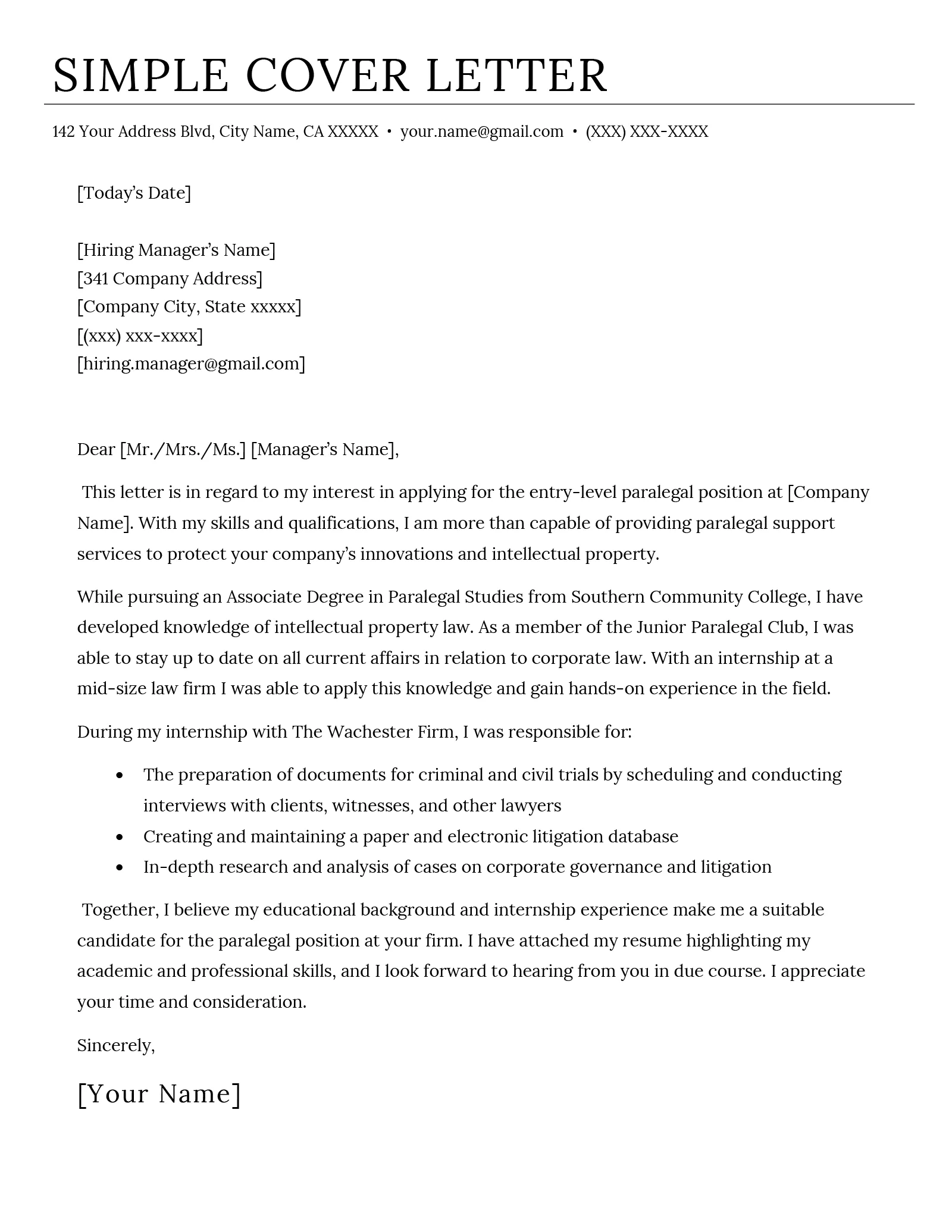
The opening paragraph should capture the reader’s attention immediately. State the position you’re applying for and briefly explain how you learned about the opportunity. Express your enthusiasm for the role and the company. You might also mention a key skill or experience that makes you a strong candidate. This paragraph sets the tone for the rest of your letter, so make it engaging and compelling. The opening paragraph is your first chance to impress the hiring manager; therefore, be concise and make a strong statement about why you’re a good fit for the role. Clearly state the position you are applying for to avoid any confusion.
Body Paragraphs
The body paragraphs are where you showcase your skills and experiences in detail. Use these paragraphs to elaborate on the qualifications that make you a strong candidate. Highlight relevant skills, provide specific examples, and quantify your achievements whenever possible. Tailor these paragraphs to the specific requirements of the job description and demonstrate how your skills align with the employer’s needs. Each paragraph should focus on a specific aspect of your qualifications and should provide compelling evidence to support your claims. Organize your thoughts logically and use clear language. Create a strong connection between your skills and experiences with the requirements mentioned in the job description.
Closing Paragraph
In the closing paragraph, express your interest in the position and the company once again. Reiterate your enthusiasm and summarize why you’re a good fit. Include a call to action, such as requesting an interview and providing your contact information. Thank the reader for their time and consideration. Make sure the closing paragraph is positive and leaves a lasting impression. A well-written closing paragraph reinforces your interest in the role, and your confidence in your ability to contribute to the company. Make sure your tone is professional and demonstrates a sincere appreciation for the opportunity. Finally, express your anticipation to hear from the hiring manager.
Proofread and Edit Meticulously
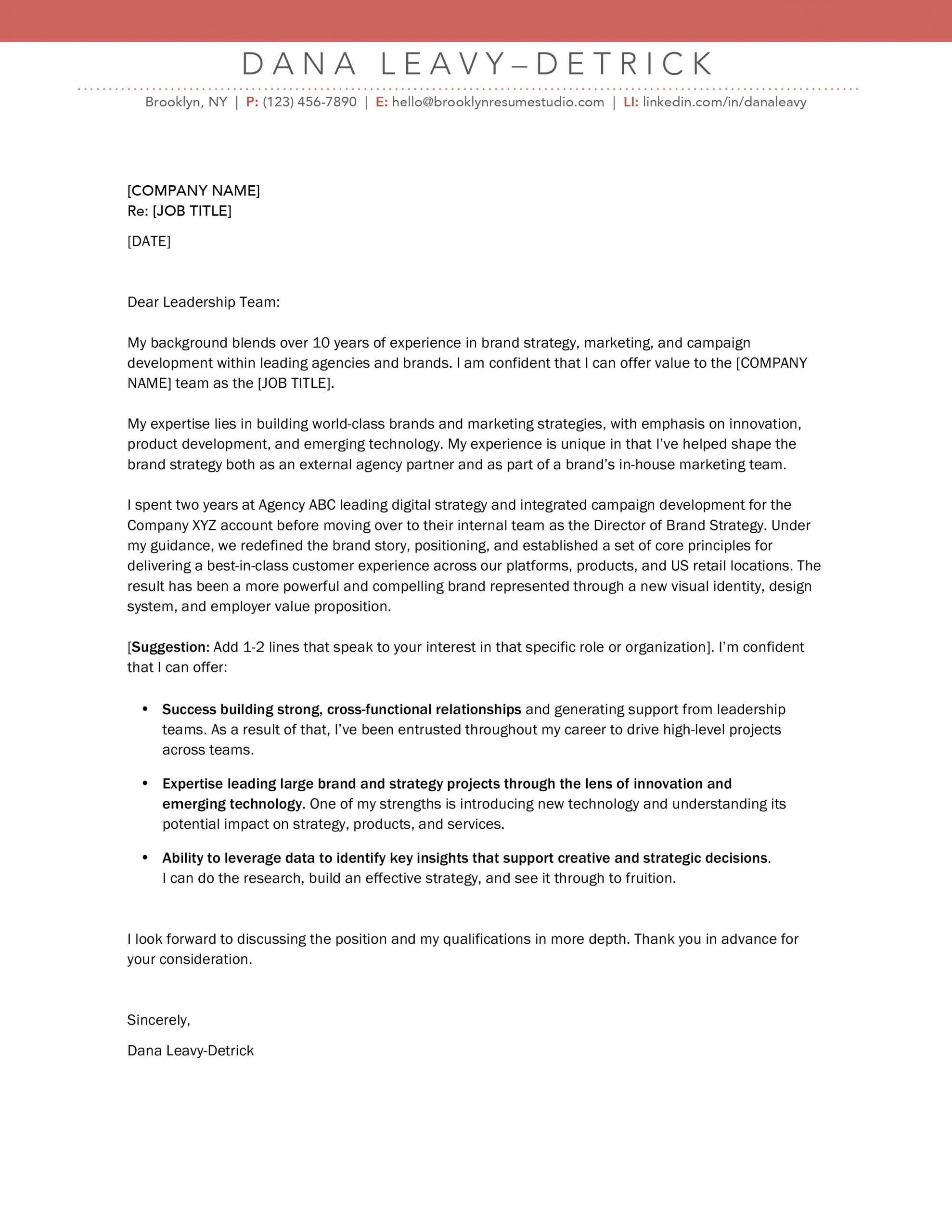
Always proofread your cover letter carefully for any grammatical errors, typos, or inconsistencies. Errors can undermine your credibility and give the impression that you lack attention to detail. Use a spell checker and grammar checker, but also read the letter aloud to catch any mistakes. Ideally, have a friend or colleague review your cover letter as a fresh pair of eyes can often spot errors you might miss. Thorough proofreading is essential to ensure your cover letter is professional, polished, and error-free. A polished letter reflects a commitment to quality and professionalism. Ensure every sentence is clear, concise, and reflects your ability to effectively communicate with others.
